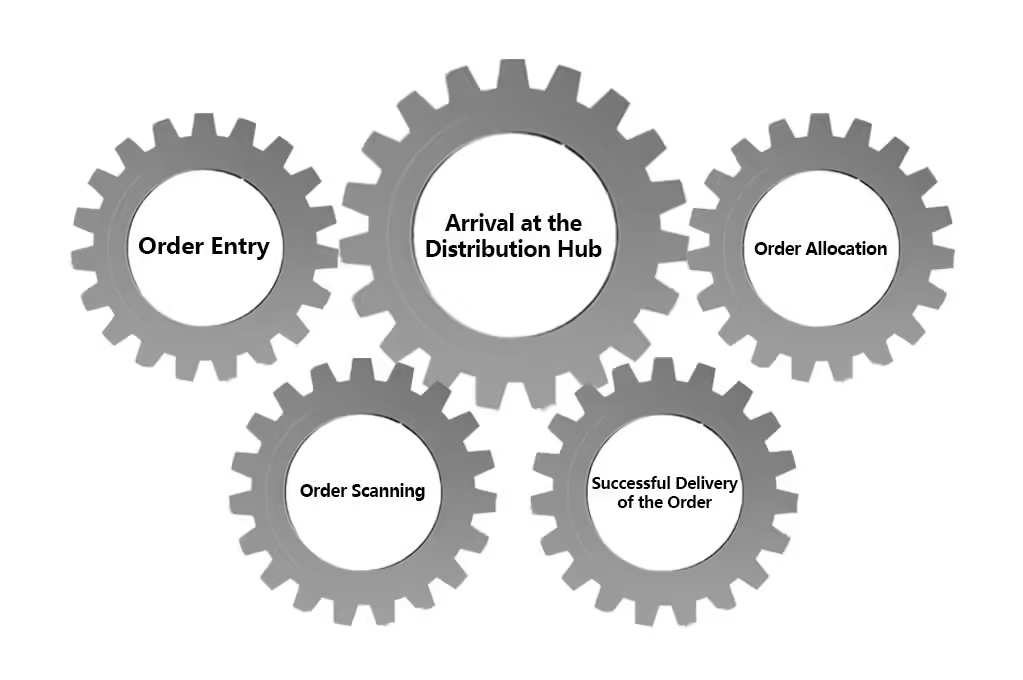Final Mile Delivery:A Comprehensive Guide
The importance of the final mile delivery has surged with the rise of e-commerce. As online shopping continues to grow, consumers expect faster deliveries, real-time tracking, and seamless experiences. In this article, we will explore what is final mile delivery,the complexities of final mile delivery and discuss strategies for optimizing this critical phase of the supply chain.
What is Final Mile Delivery
Final mile delivery, also known as last-mile delivery, refers to the movement of goods from a transportation hub or local warehouse to their final destination, typically a residential address or business location. This phase of the supply chain is considered the most crucial and often the most challenging due to its complexity and the direct impact it has on customer satisfaction. It’s the final step in the journey that products take from manufacturers to end-users, marking the point at which the promise of delivery is fulfilled.

Why Is the Final Mile So Important?
The final mile is often the most expensive and time-consuming segment of the entire delivery process. According to industry estimates, it can account for up to 53% of the total transportation costs. Moreover, it is the point at which customer experience is most directly influenced. A smooth, on-time delivery can turn a one-time buyer into a loyal customer, whereas a poor experience can result in negative reviews and lost business.
Five Key Steps in Final Mile Delivery
Step 1: Order Entry
The order is entered into the central system digitally. During this process, both the sender and the final recipient can monitor the order and make requests. The final recipient can view the shipping status in real-time using a tracking number.
Step 2: Arrival at the Distribution Hub
The order arrives at the distribution hub and awaits delivery to the final recipient. This marks the beginning of the last mile delivery, where companies strive to deliver orders to customers in the most efficient manner possible.
Step 3: Order Allocation
Based on routes and recipient addresses, orders are assigned to the appropriate delivery personnel. Proper sorting and allocation of packages are key to ensuring last-mile logistics optimization and cost-effectiveness.

Step 4: Order Scanning
Before loading onto the delivery vehicle, the order is scanned. This action updates the order status, allowing both the sender and the final recipient to track the shipment, which also helps reduce the risk of loss during transit.
Step 5: Successful Delivery of the Order
The order is successfully delivered to the final recipient, and proof of delivery is obtained. When the package reaches its final destination, the delivery person updates the tracking information to confirm the completion of the delivery.
Challenges of Final Mile Delivery
Urban Congestion and Accessibility
Cities worldwide are facing increased traffic congestion, which impacts delivery times and costs. Trucks and vans, the traditional modes of final mile transport, struggle to navigate dense urban areas efficiently. Additionally, there are restrictions on when and where vehicles can operate in city centers, further complicating logistics planning.
Sustainability Pressures
With growing awareness of environmental issues, companies are under pressure to reduce their carbon footprints. The final mile, being heavily reliant on fossil fuels, contributes significantly to pollution. Consumers are also becoming more environmentally conscious, favoring brands that demonstrate commitment to sustainability.
Rising Customer Expectations
Consumers now expect deliveries to be not only fast but also flexible. They want options such as same-day delivery, specific time slots, and real-time tracking. Meeting these demands requires advanced technology and sophisticated logistics management, increasing the complexity and cost of operations.

Strategies for Optimizing Final Mile Delivery
Leveraging Technology
Technology plays a vital role in enhancing the efficiency of final mile delivery. Advanced analytics can predict demand more accurately, allowing for better inventory management. Real-time tracking systems provide customers with updates and help manage expectations. Automated scheduling tools optimize routes, reducing fuel consumption and delivery times.
Alternative Delivery Methods
To combat urban congestion and improve sustainability, companies are exploring alternative delivery methods. Drones offer a promising solution for quick deliveries over short distances, particularly in remote areas. E-bikes and cargo bikes are gaining popularity in cities, offering a green and efficient way to move packages through crowded streets.
Collaboration and Consolidation
Collaboration among retailers and logistics providers can lead to shared resources and reduced costs. By consolidating shipments, companies can fill trucks more efficiently, decreasing the number of trips required and lowering emissions. Shared delivery hubs in urban areas can serve multiple businesses, streamlining the last leg of the journey.
Focus on Customer Experience
Ultimately, the success of final mile delivery hinges on customer satisfaction. Companies should focus on providing seamless experiences, including easy returns and responsive customer service. Personalization can go a long way; knowing a customer’s preferences and adapting services accordingly can build loyalty and differentiate a brand in a competitive market.
final mile delivery is a complex challenge that requires a multifaceted approach. By embracing innovation, fostering collaboration, and prioritizing customer experience, businesses can overcome the hurdles of the last leg of the supply chain and ensure a positive outcome for all stakeholders involved.

